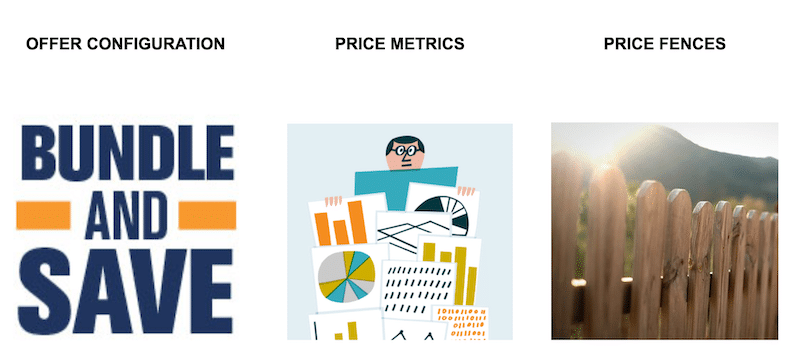Crisis management is about finding the right balance
COVID-19 has been a powerful catalyst in bringing the world to his knees. I’m having fascinating conversations these days with product and business leaders. They are genuinely struggling in these crisis times with extreme shifts in our environments, professions, and personal lives.
One of the central questions is whether business leaders should play it safe or whether now is the time to place strategic bets and take some calculated risks.
The good news is that we have insightful lessons from the past. After more than twenty years spent with “Corporate America,” I realize the ability to build resilience and adapt is paramount. Companies that produce the right competencies will be the winners. No doubt, but how can you, as a business leader, make sure you focus on the right thing? How do you balance your short-term efforts while preparing for a bright future? What alignment should you seek with your CFO?
Let me share a few principles I’ve seen work over previous periods of profound economic challenges. They can be your North Star for today’s situation.
Forget your P&L for now. Focus on Cash!

It’s hard to generalize one approach to successful financials. Still, I’ve observed that teams tend to focus (reactively) on their budgets in crisis times and obsess over how to cut their spending. It’s a recipe for disaster, as you’ll likely let your finance team make the critical decisions for you. You’ll soon jeopardize your teams’ future, and the uncomfortable discussions will take place (if they have not happened yet).
Here’s rule #1: even if you are in charge of your own P&L, you’ll do yourself, and your company a favor to consider cash is King! To shift your mindset, study your balance sheet. You will identify better ways to increase future cash or cash flow projections. As I’m sure you are familiar, the balance sheet really gives you more visibility on how the money flows between your assets and liabilities. But how can you do this if you’re not directly managing inventory, accounts receivables, or accounts payables? Here’s where product and business leaders can do their part:
Rethink costs under your watch

Focus on variable costs, as they tend to easier to fix in the short-term. In case labor is a significant part of your cost structure, you know you have better alternatives than devastating layoffs, like hiring freeze or redistribution of work. Along these lines, look at your fixed costs and understand how you could convert them into variable costs. I’m not advocating that you lay off your whole team and hire great consultants instead! But look at how you can increase your flexibility by selling some of your assets and lease them back as an example.
Your supply chain and operations teams will likely do the heavy lifting on transportation options and warehousing. Yet, consider partnering with them on contract manufacturers if you are using such suppliers. Seek how you can turn more of your non-recurring engineering costs (NRE) into variable costs or simply have them waived. Start with the product design as the vast majority of your product cost is dictated by decisions made during the design process. Standardized and multi-sourced components are a rule, but you can help on BOM scrubbing (Bill of Materials) and initiate alternate designs with lower-cost elements.
The levers will obviously differ if you’re a SaaS-only business. Still, the principle of cost optimization remains the same. Take an audit of your key suppliers. Apply the 80/20 rule and focus on the top suppliers that fall under your P&L responsibility. Reconsider your major cost items with them for present (if possible) and upcoming developments. It’s also a perfect opportunity to rethink payment terms: moving from 30 days to 60 net makes a real difference these days!
Do your part on inventory management

OK, this is more for those of us who drive a hardware business.
Inventory management is so hard to get right: reduce it to the strict minimum, and you’ll likely miss the next surge. Keep generous inventory and safety stocks, and you’ll probably not be around for the next wave!
So, how can a product or business leader help, with so many dependencies on your finance and operations teams? There’s actually one thing you can impact now that will help them all. It has to do with product portfolio rationalization.
Dig into your product lines and consider this as part of your product portfolio optimization. More than ever, it’s time to get rid of the slow-moving money–losers and double-down on the high-profit makers. Start at a family level and progressively go down to SKU-level (Stock Keeping Unit). A simple approach is to categorize your portfolio into an adjusted BCG matrix with inventory in mid, as shown above.
Then make sure you act immediately on your findings by executing an EOL plan (End-of-Life) for the low profit-high inventory value items. The principle is to accelerate the shut-down and build a clear sell-off plan. You might have sales team members specializing in liquidation channels. That’s fine, but in my experience, you’re better off engaging directly with alternative channels and let your sales team focus on the higher-touch higher-profit part of the business. That’s where their value should be!
Help rationalize the channel strategy

In times of crisis, you should walk away from the lowest profit channels and focus on distribution channels with higher margins and more favorable payment terms. It’s not as easy as it seems, though. You will likely face a lot of resistance when relationships were established for years. Still, if your sales team is too focused on “farming” with the same accounts over and over, help them elevate their plan. The outcome should be a clear articulation of your channel landscape, the key players, their operating mode for success, and expected penetration.
Remember, you don’t need to be everywhere. You just have to be in the selling destinations that matter the most to your buyers. With this in mind, favor the high–velocity channels that show growth these days (probably online marketplaces). Reduce emphasis or eliminate presence with high cost and slowing channels (think of traditional resellers with significant overheads and losing share). For more on this, just read the article I wrote on the “Top Secrets to Successful Pricing on Amazon“: it starts with a consistent channel strategy!
Optimize pricing and offering

As part of such rationalization, you will be better served by strategic pricing with proper segmentation. Whether the segmentation is done along your channels, buyers, or end-users, you need to resist the pricing spiral-down syndrome more than ever. You have worked hard, creating value with your product or solution. You have differentiation. Value-based pricing is the way to go to extract maximum profit, as it forces you to rethink your segmentation and adapt your offering and price structure.
You should also optimize your customer lifetime value by identifying the best ways to up-sell or cross-sell your customers. The goal here is to keep improving your revenue and profit by focusing on your existing customers. They are your lowest hanging fruit.
As already stated in different articles, strategic pricing is a very complete framework that influences the way you go-to-market and feeds your marketing and sales efforts. It is critical to align your marketing story and programs with your pricing model. Your hard work on establishing value needs to be fully supported by an impactful marketing effort that spreads the word credibly.
Be highly strategic with your roadmap

It’s NOT the time to slow your pace on the product development pipeline. You will likely have a lot of pressure to reduce R&D investments, so get your act together on your portfolio strategy, as stated above. The losing products (and their next generations) should have already been eliminated and have no roadmap presence.
Now is the time to pay specific attention to your rising stars. Step back and review your markets’ latest trends, technology, and what this newest crisis is disrupting or enabling. Fundamental shifts like “work can happen anywhere” have profound implications on many businesses. How do you embrace these changes and apply your core competencies to build differentiated offers that will meet demand? Only you and your teams can bring the right answers, so make sure you dedicate your most strategic thinking -and time- to your company’s future success.
In conclusion
Once we emerge from this global crisis, it will be fascinating to see who the real losers and winners are. So, should you think like your CFO? I think so, but you will need to properly balance your short-term imperatives and longer-term challenges. I trust we will observe how the winners went about cleaning their act, not being afraid of change, and redefining their future. So, don’t get stuck in tactical crisis management and cost-cutting.
Now is the time to build your healthiest future ever. Rethink your vision, methodically revisit your product portfolio, assess how you make a profit, and challenge your go-to-market.
I’m genuinely interested in getting your feedback on this topic! How successful have you been with your own crisis management efforts? Which other considerations worked for you? Just comment on this blog or drop me a note on The Product Sherpa site!
And, if you want to optimize your own strategy and maximize profit, The Product Sherpa is here to help you. We offer custom makeover programs for tangible results in just a few weeks. You can drop us a note, or schedule a free exploratory call.
